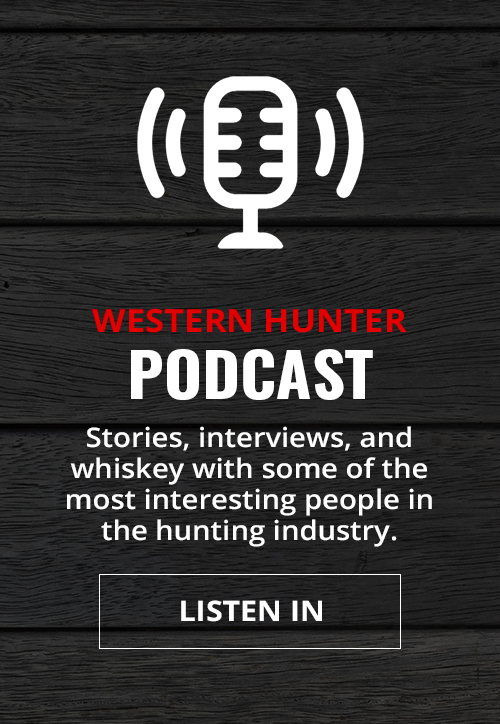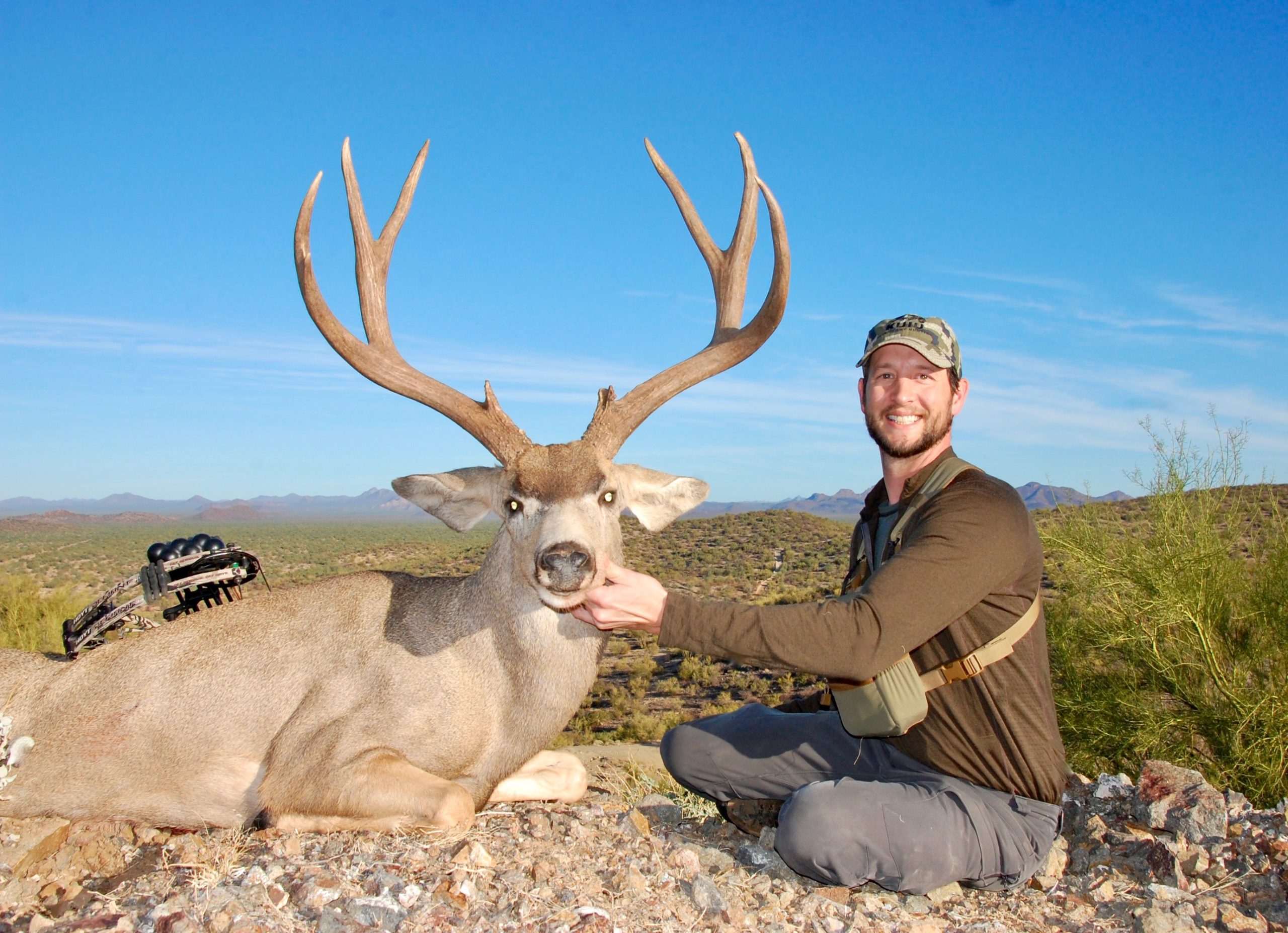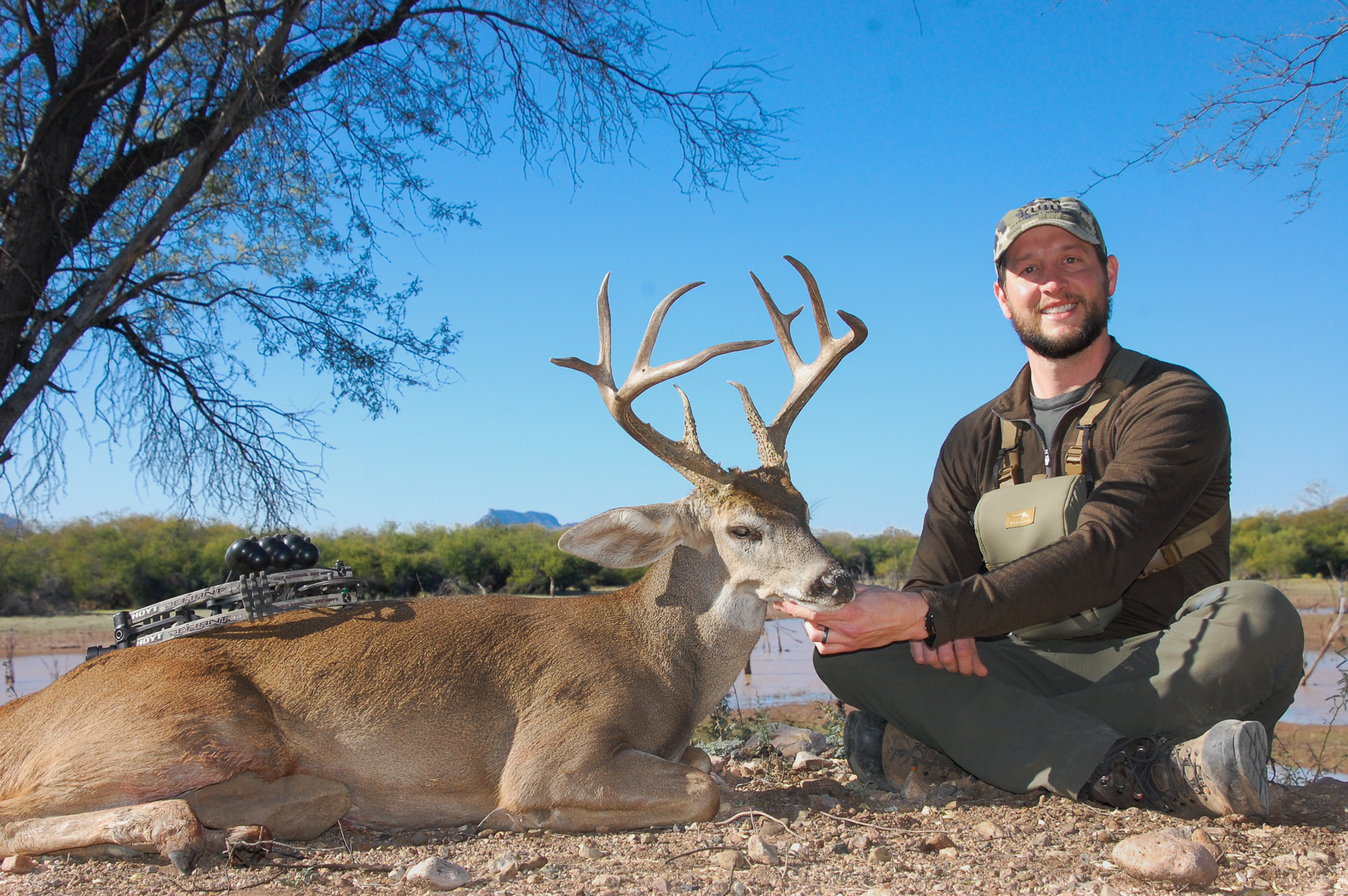
NOTICE: Certain links on this post may earn a commission for Western Hunter Magazine from Amazon or our other affiliate partners when you make a purchase. Thank you for your support.
From the Field to the Record Book
Using official record-keeping measurement systems to your advantage in the field.
Field judging animals can be very difficult. Body size, head size, ear width, and other physical features of an animal can throw off your estimations of tine length, mass, and spread. Not properly understanding the way the measuring process works for record-keeping organizations can also make a big difference on your field-judgment estimation and the official measurement for Boone & Crockett or Pope & Young.
Here are a few tips for using the record-keeping scoring system while field judging animals. These tips will help make your field judging more closely resemble actual trophy measuring.
If an official record-book animal is your goal, then pay close attention to mismatched sides. Because of the scoring system’s treatment of symmetry, always use the smallest measurement from either side to estimate the final official score. For example, if a G-2 on one side of a mule deer is 18” but only 15” on the other, only count 15” per side as that measurement will be what counts towards the official net score.
Deer
For deer, the majority of your total score will be up front—the main beams, front forks, and inside spread. Also, don’t overlook eye guards and mass measurements. Deer always get four mass measurements per side and three of them will be on the main beam. Forks on deer can score higher than most people field judge because the official measurements are taken on lines that intersect along the middle of tines and main beams (green in the image below) instead of on the inside curve of the forks (red). If you estimate a buck for having 8” forks, often times the true measurements of the G-3s or G-4s will be closer to 9” or 9.5” due to true measurement lines.
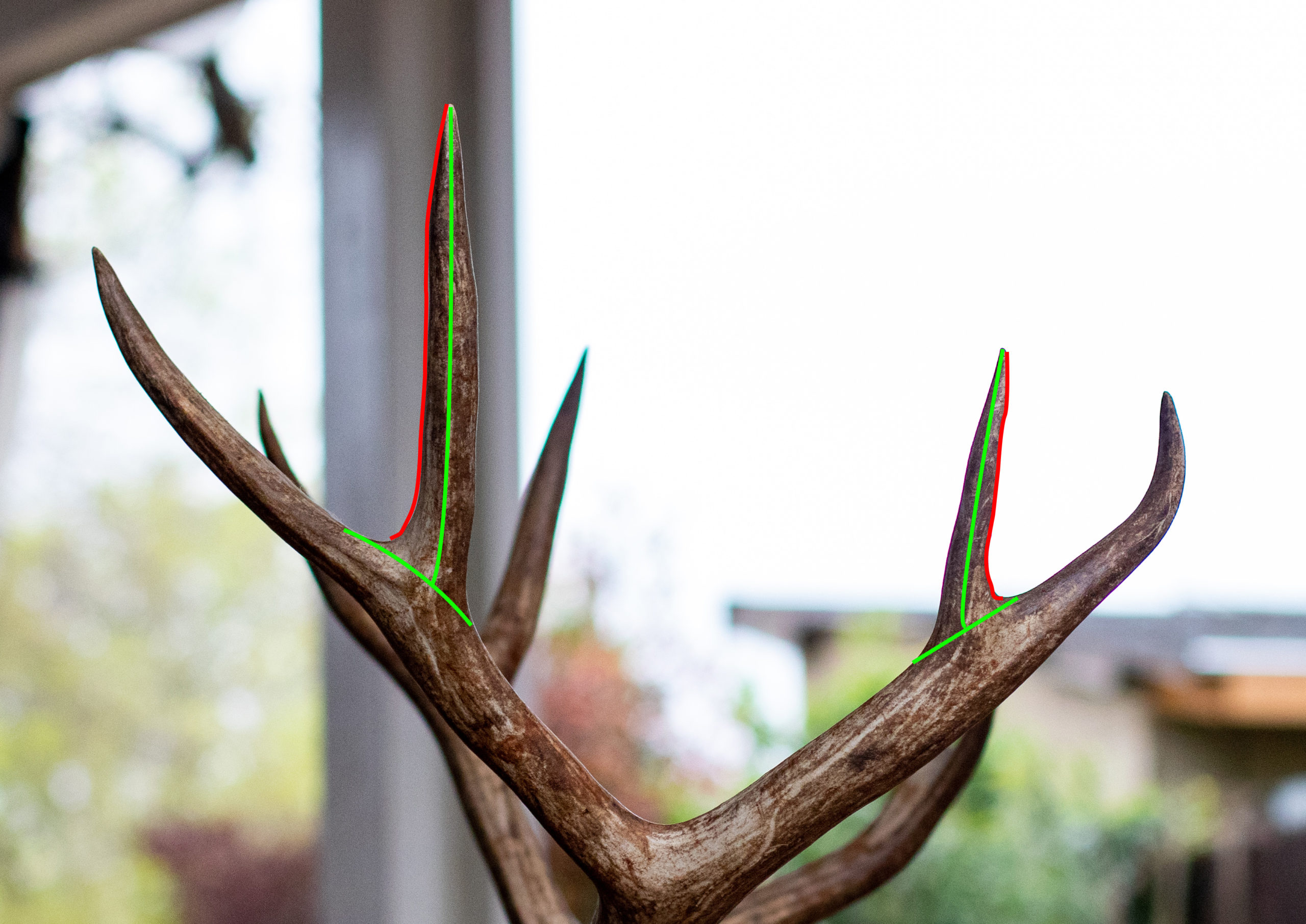
Outside spreads are eye-catching, but the greatest inside spread of main beams is the official measurement that counts toward score. Remember that the inside spread credit can only be as big as the longest main beam. That only comes into play with deer that have main beams jetting straight out to create uncharacteristically wide frames when compared to the main beams. On antlered game, there are a lot more measurements for tine length and mass than there are for spread.
Elk
Elk rack up a majority of their inches in tine length. Main beams and tines will add up quickly on the score sheet. Main beams change planes several times, so main beam measurements can be slightly longer than the estimated from pedicle to tip. Mass measurements between the first two points can be larger than expected if the two points project closely off the main beam.
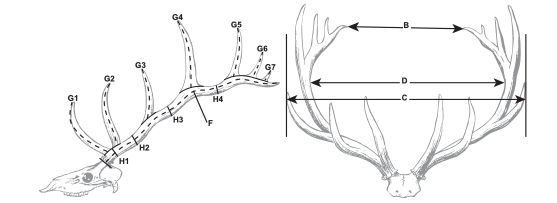
Since all mass measurements on elk are circumferences of the main beam, look to see if points are close together. Main beams on elk can fool even experienced hunters. The difference between a bull with 54” main beams and 60” main beams will dramatically affect a bull’s official score. Also, look for points that curve upward after sweeping away from the main beam. The more points curve upward toward the end, the longer the measurements will be.
Horned-Game
Horned-game such as sheep, bison, and antelope don’t have a width measurement affecting the final score. Horns have length and four mass measurements. The location of mass measurements will be determined based on the longer horn. Each quarter will be marked and circumference measurements will be taken at that location starting at the base. Next is the first quarter, then second and third. With four mass measurements on horned critters, mass can be a huge part of the official score. Heavy rams and antelope will lead to a happy hunter when the tape measure is applied! Deductions are made only on the mass measurements for sheep, not length. Antelope and bison have deductions for horn length from side to side.

In addition to horn length and mass measurements, antelope get a score for the prongs. Prongs are measured from the middle of the back horn around to the top of the prong. A prong that extends 5” from the main horn will measure closer to 8” on the prong measurement. While field judging, length measurements on bucks that grow hooking main horns will gain extra length that may be overlooked if you are judging an antelope based on horn height. Again, because of eight circumference measurements, pronghorn scores love mass!
Caribou
With nearly 30 measurements toward the official score, take a calculator with you on caribou hunts! Caribou are so unique, field judging them for B&C score can detract from the experience of hunting them. A few pointers: look for long, C-shaped main beams curving back over the nose.
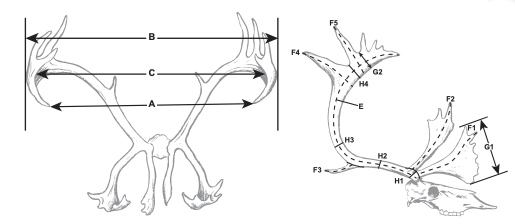
Only the two longest points on top are scored for length. Palmation on the top of the antlers will help for two measurements. Bez points mostly matter for length. The front shovels (brow) get length and width (top to bottom) measurements. Long back scratchers are bonuses. The more points, the better! Or just pick the one you like the best and be surprised by the final score…
Skulls
bears/cats are very difficult to field judge because all of the measured portions of the trophy are covered by tissue on the live animals. Overall head size must be estimated with the hide and tissue attached, so true measurements cannot be taken until after the skull is cleaned. Those factors make field judging skull trophies tough.
Brushing up on the official-scoring system for a species before a hunt can be very beneficial if your goal is taking record-book animals. Even if it isn’t, learning the scoring systems is great to compare animals with your hunting buddies after you punch your tag.
For practice score sheets for all North American species click on the links for B&C and P&Y, then select your species.



